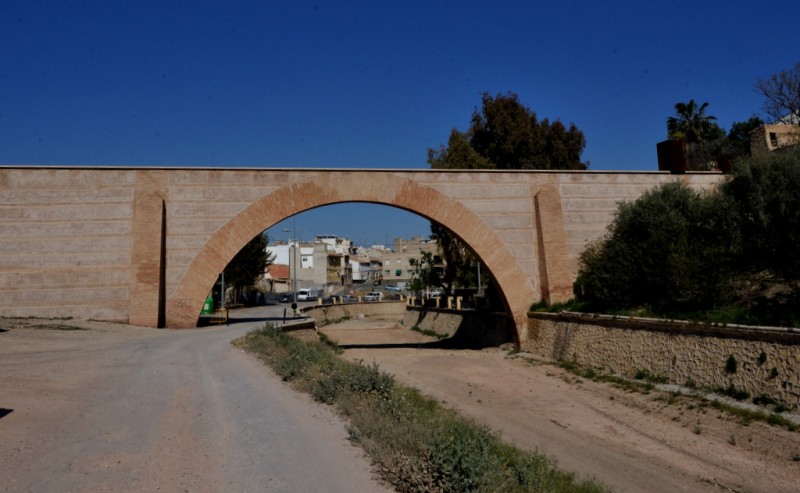

- EDITIONS:
 Spanish News Today
Spanish News Today
 Murcia Today
Murcia Today
 Alicante Today
Alicante Today
The Arco de Ollerías aqueduct in Totana
The aqueduct was built in the 18th century to carry water from Sierra Espuña to Totana
 The aqueduct named “Arco de las Ollerías” is located at the northern end of the town centre of Totana and was built in 1753 by local man Pedro de Mora Cánovas following the design of Silvestre Martínez, who was also responsible for the ornamental fountain in the Plaza Mayor.
The aqueduct named “Arco de las Ollerías” is located at the northern end of the town centre of Totana and was built in 1753 by local man Pedro de Mora Cánovas following the design of Silvestre Martínez, who was also responsible for the ornamental fountain in the Plaza Mayor.
The reason for the project was the need to bring water into the growing town of Totana from the La Carrasca spring in the mountains of Sierra Espuña, and the aqueduct’s point of entry into Totana is in the old part of town where some of the traditional pottery workshops still exist. At the time these workshops were more numerous and constituted a vital part of the local economy.
The aqueduct is finished with stone from the Sierra de Tirieza, which is between Totana and Aledo in the foothills of Sierra Espuña, and this work was undertaken by master stonemason Diego López Tello.
Interestingly, in some respects little has changed regarding the water supply in Totana. The town still receives water from La Carrasaca, although it is no longer transported over the aqueduct, which stands now as a monument to the past. The water still reaches the fountain of Juan de la Uzeta in what is now named Plaza de la Constitución.
Another aqueduct of interest in Totana is the “Arco Perdiguero”, which is used to transport irrigation water to the “La Huerta” district north of the town centre.
Click for more information about the municipality of Totana.
